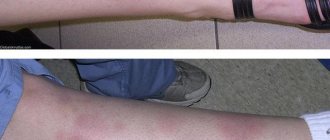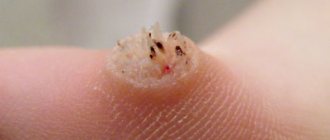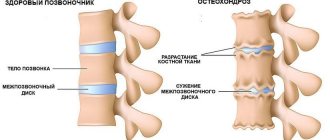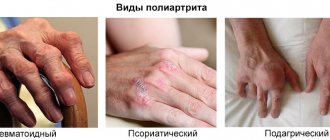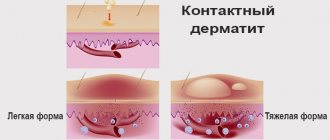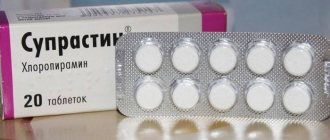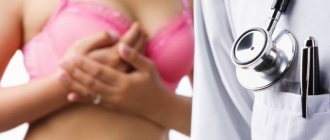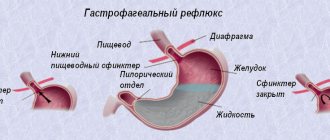What is it: description and photo
Doctors sometimes call false gynecomastia lipomastia. This phenomenon is not a disease in the usual sense of the word. In essence, this is a cosmetic defect that develops in men with partial hypertrophy of the mammary glands and enlargement of the mammary gland due to living tissue.
Unlike true gynecomastia, hormonal levels with false gynecomastia remain either normal or minimally deviate from the norm.
False gynecomastia is most often diagnosed in men, since this pathology is invisible in women. The hormonal levels are normal, and the enlargement of the mammary gland of the fair sex is only pleasing.
As for children and adolescents, they are also more often diagnosed with true gynecomastia; its causes lie in changes in hormonal levels during puberty.
Below you will see what this pathology looks like:
Lipomastia
Complexes about the imperfection of their figure are not limited to women. Increasingly, representatives of the stronger sex are turning to doctors with their specific problems.
Lipomastia (false gynecomastia, pseudogynecomastia) is an enlargement of the mammary gland in men due to the proliferation of adipose tissue . Visually, it represents a female breast, which is formed due to fatty hyperplasia of the mammary glands and prolapse of the nipple-areolar complex.
Unlike true gynecomastia, which is most often caused by hormonal imbalance and comes under the attention of an oncologist, fatty breast enlargement does not pose a danger to a man’s health and is purely an aesthetic defect, which a plastic surgeon works to correct.
Causes of lipomastia
In the vast majority of cases, false gynecomastia occurs against the background of obesity. The enlargement of the mammary glands occurs due to fatty tissue, and the glandular tissue remains within normal sizes. In addition, medical practice knows examples where lipomastia was caused not by an increase in total body weight, but by excessive and constant consumption of beer, which significantly affects the gain of fat mass.
- Gynecomastia - causes, types, treatment
In adolescence, when the hormonal balance has not yet normalized, boys may have both true and pseudogynecomastia. Combinations of the two types of disease also occur in older men - the cause in this case is obesity due to an imbalance of testosterone and estrogen.
| What does lipomastia (false gynecomastia) look like? Photo: | |
Diagnosis of lipomastia
The basis for the treatment of any disease is a correct diagnosis, therefore, if lipomastia is suspected, a full examination is required, as with true gynecomastia. It includes a palpation examination to identify the location of formations, their size and pain, ultrasound, and, if necessary, mammography and biopsy of mammary tissue.
Depending on the results obtained (lipomastia or mixed gynecomastia), treatment is selected, which may consist of diet, hormonal correction, as well as cosmetic methods to solve the aesthetic defect.
Elimination of pseudogynecomastia
The easiest way to get rid of false gynecomastia is to reduce body weight on your own or under the supervision of doctors through diet and regular exercise. However, this method does not always give the desired results - even with hard work in the gym in combination with proper nutrition, completely getting rid of accumulated excess fat can be difficult, and sometimes even impossible. In this case, the next step is surgical treatment: the patient undergoes liposuction, which, if necessary, can be combined with skin tightening.
| Photos before and after operations to remove false gynecomastia (lipomastia): | |
The operation is performed under general anesthesia, since quite often patients need not only to pump out fat, but also to move the nipple to a new place, excise excess skin, and form a new breast contour. Simple liposuction is performed without incisions, through punctures in the skin, suctioning out the fat with cannulas.
The postoperative period is no different from any other body contouring plastic surgery - the patient wears compression garments, avoids stress and visits to swimming pools, saunas, steam rooms, gyms, etc.
Prevention of lipomastia
Preventing the appearance of false gynecomastia is quite simple - regular physical activity, an active lifestyle, proper nutrition, avoiding excessive consumption of alcohol, especially beer. The same recommendations must be followed by men whose breast formation is caused by hormonal imbalances and metabolic disorders, so as not to aggravate the process.
Also, all patients who have undergone liposuction or complex breast surgery need to remember that the problem may return again if its treatment is not followed by any changes in lifestyle.
At-risk groups
False gynecomastia can occur at any age , but in most cases it is diagnosed during adolescence. During this period, hormonal levels change dramatically, and if a teenager is overweight, the risk of developing false gynecomastia increases.
After 35 years, the risk of developing false or mixed gynecomastia also increases, since at this time men experience a decrease in the production of testosterone (male sex hormone) and disruptions in metabolic processes begin.
Among older men, false gynecomastia is diagnosed less frequently, but if you look at the root, the breasts simply sag as the epithelial tissue loses its elasticity. False gynecomastia can be unilateral or bilateral.
At risk:
- Overweight patients - false gynecomastia occurs when adipose tissue accumulates; in this case, fat is deposited in the mammary glands according to the female type.
- Athletes taking steroids – changes in hormonal levels, as well as a sharp loss of muscle mass after stopping steroids, can lead to the development of this pathology.
What types and types are there
By shape
Experts classify this disease as follows.
True gynecomastia - occurs with damage to the glandular tissue that fills a significant part of the breast, is accompanied by tissue hypertrophy, and can increase in volume within 20 cm.
This form of the disease, in turn, is divided into subtypes that occur in men of different age categories:
1) in newborns (physiological gynecomastia)
Gynecomastia in a newborn goes away on its own and does not require treatment.
If the mother of a newborn suffered from endocrine diseases, which were accompanied by an increased content of hormones, then the same problems could be inherited by her fetus or newborn baby. In photo 2 you can see the gynecomastia of a newborn whose mother suffered from hyperestrogenemia (increased estrogen levels) in the last months of pregnancy.
2) in adolescents (pubertal form)
Gynecomastia in a teenager
Gynecomastia occurs in boys during puberty (aged 11-14 years). The prevalence of this disease among adolescents varies between 30–65%. Regression (decrease) of the disease occurs in most adolescents within one year.
3) in young and middle-aged men
Gynecomastia in a young man
This disease rarely occurs in young men, except in cases where young people become involved in professional sports and then suddenly leave it. The consequences of taking steroid drugs for the sake of a sports career can be seen in the photo above.
4) in older men
Gynecomastia in an older man
The disease predominantly occurs in men aged 50–80 years and is associated with age-related changes or the consequences of chronic diseases. In photo 5 you can see what the disease looks like in older men.
5) False (pseudogynecomastia)
It occurs only in the fatty tissue of the breast. It occurs more often in obese men.
Pseudogynecomastia in a man with early obesity
In medical practice, specialists know cases where gynecomastia combines both true and false forms.
Type
This disease is divided into gynecomastia:
- Asymmetrical (or unilateral, when only one breast is affected, this pathology is quite rare);
Asymmetrical form of gynecomastia in men is rare
- Symmetrical (or bilateral - with damage to both mammary glands; this pathology is more common).
Stages
Since this disease is caused by the proliferation of glandular and adipose tissue cells, several main stages of its development can be distinguished.
- Developing
This is the primary stage, the duration of which is no more than 4 months. Timely prescribed conservative therapy will return the mammary glands to their original appearance.
- Intermediate
At this stage, the expanding tissue in the mammary gland matures, a process that lasts for almost a year.
- Fibrous
This stage is characterized by the fact that the connective tissue in the mammary gland becomes mature, and the glandular tissue becomes covered with fatty deposits.
Recent Entries
Is it possible to give a mirror: how to protect yourself from bad omens It became known about the influence of cell phone towers on human health Is it possible to eat bananas bought in Russia?
Stages of development of gynecomastia in men
Reasons for development
In most cases, pathology in both men and women appears against the background of excess weight. In more rare cases, false gynecomastia appears as a result of hormonal imbalance or the presence of a malignant tumor in the pituitary gland and hypothalamus .
The hormonal balance can change naturally during puberty, or it can occur when drinking beer too much or when taking steroid drugs.
After losing excess weight, false gynecomastia does not go away - fat accumulations remain in the mammary gland.
Treatment
When the mammary glands grow, many people wonder which doctor to contact, since the problem for some men is quite delicate. Since many diseases can provoke gynecomastia, it is better to initially consult with a therapist . Based on accompanying symptoms and general medical history, the doctor will give a referral to specialists. This could be an endocrinologist, oncologist, urologist, mammologist or other doctor specializing specifically in the alleged diagnosis.
Depending on the root cause of the disease, a treatment regimen is selected. It can be conservative or combine surgery with other techniques. At the same time, measures are being taken to eliminate the underlying disease, in which the growth of the mammary glands can act as one of the manifestations of symptoms.
Conservative treatment
If gynecomastia in men develops due to increased activity of estrogen and is not physiological, then hormonal therapy is chosen, aimed at suppressing the action of these hormones. To achieve results you need to take a course, sometimes it takes more than one month.
Hormone therapy should be prescribed exclusively by a doctor.
Treatment without surgery can also be carried out in case of gynecomastia as a result of taking certain medications. Sometimes simply canceling such medications allows the condition to normalize.
Surgery
For pathologies associated with the development of various neoplasms in the mammary glands, it is necessary to use surgical methods . Indications may include the ineffectiveness of conservative therapy, as well as the desire of the man himself to correct the shape of his breast. Treatment and removal of gynecomastia can be done using various surgical techniques, for example:
- Subcutaneous mastectomy. Glandular tissue is removed through an incision in the areola. The subsequent scar remains barely noticeable. Additionally liposuction can be used if the gynecomastia is false and occurs due to a large accumulation of fat.
- Mastectomy using an endoscope. Performed through a puncture, it is practiced for small tissue growths. The operation is suitable for those men for whom it is important to maintain the aesthetic appearance of their breasts. The scars from the puncture are practically invisible and can be located near the armpit.
- Simple mastectomy. Used in cases where breast growth is caused by cancer. The entire mammary gland is removed along with the nipple.
Any surgical intervention requires special rehabilitation in combination with supportive therapy. Its type is determined by the main indications for the operation.
Prognosis for the treatment of gynecomastia in men depends on the underlying cause of breast growth. For physiological ones, they are mostly favorable, but for pathological or true ones, they can be different, it all depends on the disease that provoked the hormonal deviation.
Every man who exhibits symptoms of gynecomastia should understand that this is not an aesthetic problem, but a phenomenon that may indicate the development of a serious pathology. There is no need to try to disguise your breasts; the only correct solution is to see a therapist.
Symptoms in men, women and children
Symptoms of false gynecomastia are as follows:
- the mammary gland increases in volume;
- there is no pain on palpation;
- nipple halos droop;
- The mammary gland in the area of enlargement is soft;
- the color of the nipple remains the same.
In women, false gynecomastia can be observed in the form of diffuse nodular mastopathy, in this case the following symptoms are present:
- breast tenderness;
- the presence of compacted areas in the mammary gland;
- nipple discharge.
Sometimes the disease is of a mixed nature - simultaneously with an increase in the volume of adipose tissue, the glandular tissue also increases, which makes it possible to determine such a form of pathology as true gynecomastia:
- change in nipple color;
- dense consistency of the mammary gland;
- pain.
Severities and symptoms
The main symptoms of gynecomastia are the presence of pain and tenderness in the breasts, itching, disruption of normal growth, appearance of feminine breasts and accumulation of fat in the breast area.
Gynecomastia is classified into different degrees depending on the severity as shown below:
- Grade 1 - characterized by the appearance of a breast mass below the areola (pigmented area around the nipple), less than 250 g, which becomes more obvious when the nipple is compressed. In this case, the volume is less, but may be noticeable when wearing tighter clothing;
- Grade 2 - in this case, the amount of breast tissue is larger, ranging from 250 to 500 g, not limited to the area under the areola, but also appearing in most of the chest. Here the appearance of the chest can be better seen;
- 3rd degree - characterized by large, sagging breasts, weighing more than 500 grams. At this degree, gynecomastia is quite obvious, difficult to disguise, and already has a significant psychological impact on the patient (see photo above).
Diagnostic methods
Diagnosis of gynecomastia must be carried out . As already mentioned, false gynecomastia is not a serious pathology, but the fact is that the symptoms of false gynecomastia may be no different from mixed or true. If you suspect gynecomastia, you should contact a mammologist, surgeon or endocrinologist.
The patient is prescribed the following studies:
- blood test for hormones;
- blood chemistry;
- chest x-ray;
- Ultrasound of the breast;
- CT.
If the doctor finds it difficult to make an accurate diagnosis, the man may be prescribed additional tests, for example, an ultrasound of the testicles.
Surgical intervention
Surgical treatment of gynecomastia is carried out if other methods have failed. There are several operating techniques, one of which is chosen only by the surgeon:
- Mammoplasty with liposuction. The doctor removes excess glandular and fatty tissue and reconstructs the breast to its normal size.
- Mastectomy. This operation involves excision of the breast under local or general anesthesia.
- Endoscopic removal of the gland. Surgical removal is performed using an endoscope through small incisions in the armpit.
- Laser removal. The surgeon makes a small puncture through which the optical fiber is inserted. The laser destroys excess or pathological tissue, then pumps it out using a vacuum.
Surgical treatment of gynecomastia, despite its undoubted advantages, can cause complications, like any other operation. The patient should be notified of them before surgery.
Treatment of bilateral and unilateral pathology
Treatment of false gynecomastia is determined depending on the cause that caused this pathology. In some cases, false gynecomastia goes away on its own, in others it is enough to adjust your diet and start playing sports, in others you will need to take medications, and sometimes you cannot do without surgical intervention.
Normalization of nutrition and physical activity
The doctor can give such recommendations provided that false gynecomastia has developed against the background of obesity. At the same time, blood tests are normal, and there are no special hormonal abnormalities.
The patient is advised to lose excess weight:
- eat small meals;
- exclude fast food and foods that contribute to weight gain from the diet;
- eat more vegetables and fruits;
- count calories.
It is also necessary to increase physical activity:
- push ups;
- run;
- swimming;
- cycling.
It is not prohibited to use traditional methods of treating gynecomastia:
- honey compresses;
- herbal decoctions - plantain, hops, red clover, sage, ginseng, eleutherococcus, tribulus, white cinquefoil, hibiscus.
Drug treatment without surgery
Only a qualified specialist can prescribe medications; unauthorized use of drugs can lead to unpredictable consequences.
- If the patient has low testosterone hormone, he is prescribed Androgel. Price from 2305 to 3199 rubles. It is rubbed into the upper body. The active substance penetrates the bloodstream, as a result of which the condition of the mammary glands is normalized.
- If the permissible level of female hormones significantly exceeds the norm, Clomiphene is prescribed. Price from 550 to 700 rubles. The drug is taken 1-2 times a day, 50 mg for 3-4 months.
- In the later stages of pathology, Tamoxifen may be prescribed. Price from 99 to 114 rubles. The dosage and course of treatment is determined by the attending physician.
Surgical intervention
If fat deposition is very significant, and weight loss and conservative therapy do not have a positive effect, the doctor may recommend surgical treatment.
To get rid of deposits, a procedure such as liposuction is most often recommended - adipose tissue is destroyed by ultrasound, laser, radio waves or drugs, and then removed from the body using a vacuum aspirator. This technique is used if there are no coarse fibrous structures in the connective tissue. If they are present, the usual removal method is used - mastectomy.
In some cases, a combined method may be used - a combination of mastectomy and liposuction.
During a mastectomy, the glandular tissue is completely excised, the fatty tissue is removed , and, if necessary, part of the stretched skin is removed. The areola and nipple are preserved. The duration of the operation is about 1.5 hours.
The cost of surgical intervention ranges from 60,000 to 95,000 rubles.
Drug therapy
The development of gynecomastia is provoked by various factors - from poor nutrition to serious autoimmune diseases.
Therefore, its treatment involves eliminating the causes that provoked the disease and normalizing hormonal levels in the body.
Medicines widely available in pharmacies will help you cope with the problem. Hormonal drugs are usually prescribed based on:
- progesterone – prescribed for insufficient testicular function;
- antiestrogens - prescribed to block female hormones that affect breast enlargement.
Thiamine bromide
This is a B vitamin. Its action is aimed at stopping the production of aromatase. Under the influence of this enzyme, male hormones are transformed into female ones.
For the treatment of gynecomastia, it is prescribed in the form of injections - 1 time per day. Treatment time is 14 days. Instead of injections, you can take the vitamin in the form of tablets - 0.12 g three times a day.
Vitamin B1
The action of vitamin B1 is similar to Thiamine bromide. It also blocks the production of aromatase.
Since B1 is a water-soluble vitamin, its content must be constantly replenished in the body, because its elimination occurs very quickly.
Therefore, it is recommended to use it in the treatment of gynecomastia in courses : 1 ml is administered intramuscularly every other day for 20 sessions. After 2 months the course is repeated.
Androgel
This product is available in the form of a gel containing the male hormone - testosterone. It regulates fat deposition and has a good effect on potency and libido.
The product is applied, without rubbing, to the skin of the shoulders and abdomen in a circular motion. During the day, the hormone contained in Androgel enters the bloodstream.
It is usually prescribed once a day in the morning . The dosage – 5 g should not be increased independently by patients.
A week after the start of therapy, it is recommended to monitor the hormone in the blood.
Proviron
Mesterolone, as the active ingredient of Proviron, improves potency, promotes the active production of male sex hormones, and improves the formation of genital organs.
The drug is prescribed for hypogonadism for a long time, 25-50 g three times a day.
A detailed description of the rules of rehabilitation after mammoplasty by day. Read here how you can enlarge your breasts at home.
At this address https://cosmetolog-expert.ru/plastika-tela/grudi/implantyi/skolko-stoit-sdelat-silikonovuyu.html we will tell you how much it will cost to make silicone breasts.
Didrotestosterone
Used for insufficiency of the male reproductive glands. Thanks to this hormone, the process of utilization of adipose tissue is normalized and protein production is enhanced.
The dosage of the drug is determined only by the attending physician based on a biochemical blood test.
Tamoxifen
This medicine comes in tablet form. Its main purpose is to suppress the production of estrogen, which affects the formation of tumors in the mammary gland and other organs.
While taking tablets at a dosage of 20-40 mg per day, a man’s breasts return to their previous shape. The duration of therapy is determined by the doctor.
Omnadren
The drug is available in the form of an oily solution for injection . It is based on testosterone, which forms the male constitution of the body.
The product is used once a week (in some patients it can be used once every 2-3 weeks) as a deep injection into the gluteal muscle. The duration of treatment is determined by the doctor.
Human chorionic gonadotropin
Human chorionic gonadotropin regulates the functioning of the sex glands, sperm formation and testosterone production. It is available in the form of an injection solution.
However, this drug has a number of side effects - the appearance of sexual preoccupation in behavior, an increase in the size of the penis, increased nipple sensitivity and breast growth.
Therefore, the use of human chorionic gonadotropin should be strictly controlled by a specialist. Typically, for the treatment of gynecomastia, about 1000-2000 units are prescribed 2 times a week for 3 months.
Testolactone
It is a powerful anti-estrogen. During its use, the body's production of testosterone increases sharply.
Used to suppress estrogen production in men. You need to take 250 mg per day.
Fareston
The drug has antiestrogenic activity. Used in the treatment of gynecomastia in men.
However, its use can cause a serious side effect in the form of cardiovascular diseases associated with an increase in cholesterol in the blood.
Take Fareston 20-60 mg per day.
What is tubular breast shape and methods of its correction. In this publication, we will find out why nipples may be retracted.
Follow the link https://cosmetolog-expert.ru/plastika-tela/grudi/uvelichenie-g/kompressionnogo-belya-posle-mammoplastiki.html to find out what the price of compression garments after mammoplasty is made up of.
Clomiphene citrate
Another name for the product is Clomid . Its goal is to reduce the amount of estrogen in a man’s blood and thereby prevent the enlargement of the mammary glands.
The drug is usually well tolerated, rarely causing side effects. Use 1-2 tablets per day for a month.
Dinazole
It is a synthetic androgen derived from ethisterone, which is used in the treatment of breast diseases.
Prescribed 3 capsules per day for the treatment of gynecomastia in men.
Nebido
This is a drug with a pronounced androgenic effect. It reduces the amount of adipose tissue, including in the chest area, and enhances sexual function.
Used for hypogonadism in men. Available in the form of an injection solution, which must be administered slowly intramuscularly 1 time, 1 ampoule 3 times a year.
After this, the level of progesterone in the blood necessary for male health is maintained.
Sustanon
Sustanon is a mixture of testosterone esters. This is an oily liquid for intramuscular injection, which increases the production of male hormones.
In men with gynecomastia, the amount of adipose tissue decreases, the level of cholesterol in the blood decreases, and bone tissue strengthens.
It is administered intramuscularly once every 3 weeks for 3 months.
All the drugs described above are hormonal. The need for their use is determined only by a doctor, since uncontrolled treatment with hormones can lead to serious side effects - baldness, infertility, prostate cancer.
Prevention
To prevent the development of lipomastia you need to:
- monitor nutrition and weight;
- exercise;
- Minimize the consumption of alcoholic beverages (especially beer).
We must not forget that after liposuction the problem may appear again; in order to avoid a recurrence of the situation, your lifestyle must be changed forever.
We recommend that you look at our articles about what gynecomastia is, what are the causes of this disease in adolescents and children, men and women, as well as what are the methods of treatment from a doctor and at home.
False gynecomastia is a very unpleasant phenomenon, and in men it can cause depression, nervous disorders, and feelings of self-doubt. However, lipomastia can be corrected quite successfully. The main thing is to consult a doctor in time, make sure that gynecomastia is really false, find out the exact reasons for its appearance and strictly adhere to all the specialist’s recommendations.
If you want to be the first to know about the release of new articles or you are simply more accustomed to reading on VKontakte, then join our group “Beauty Secrets” and stay up to date with all the news in the beauty industry. Subscribe!
Symptoms of gynecomastia
The photo shows the mammary glands of a healthy person and a patient with gynecomastia.
- Discomfort and feeling of heaviness in the mammary glands;
- Itching and swelling in the nipple area;
- Increase in the size of the mammary glands up to 20 cm;
- Enlargement of the nipple areolas, as well as darkening of the areolas;
- Colostrum leakage from nipples or breast milk.
Against the background of these symptoms, you may experience:
- Hypolybidemia (low sexual desire);
- Decreased erection;
- Changing the timbre of the voice (raising the tone);
- Depressive states and psycho-emotional imbalance;
- Reduction of hair.
Which doctor should I contact?
If the mammary glands are enlarged, you can first consult a general practitioner or pediatrician, depending on the age of the patient. The doctor will be able to distinguish between physiological gynecomastia and pseudogynecomastia and prescribe an initial study. Depending on its results, the patient is usually referred to an endocrinologist. Less often, treatment by a neurologist or neurosurgeon is required. A consultation with a urologist, geneticist, oncologist, infectious disease specialist, ophthalmologist (changes in visual fields), nephrologist, cardiologist, surgeon may be indicated.
Stages of development of gynecomastia
For diagnosis, study of biopsy material is used. Cytological examination of tissue reveals one of three stages of pathology:
- initial (proliferation phase) - indicates changes in the first four months; with timely therapy, there is the possibility of reverse development;
- intermediate - forms the final “maturation” of glandular cells, lasts 4–12 months;
- fibrous - compaction occurs due to the germination of fibrous cells, accumulation of fatty deposits; it is impossible to stop the process therapeutically.
Medicines for the treatment of gynecomastia
If conservative therapy is possible, the doctor chooses one of the antiestrogenic drugs:
- Testosterone tablets are indicated for men no older than 50 years.
- Tamoxifen - suppresses estrogen synthesis.
- AndrokurDepo - reduces the synthesis of androgens.
- Proviron - does not allow androgens to transform into female hormones.
- Clomid + Gonadotropin are recommended for normal and low estrogen levels in a blood test.
Vitamins A and E stimulate testosterone production and normalize hormone balance. Most drugs are prescribed for a course of at least four months. Effectiveness can be judged by the reduction in education.
Classification and causes of gynecomastia
Increased levels of estrogen can be caused by physiological and pathological reasons, depending on this, gynecomastia is classified as physiological or pathological.
Physiological gynecomastia is characterized by age categories:
- gynecomastia of newborns: caused by the presence in the boy’s body of estrogens from the mother’s blood, which were introduced into his blood during the prenatal period, this pathology disappears on its own after 2 weeks (sometimes after a month), is observed in 70% of boys in the first days of life;
- pubertal gynecomastia: caused by hormonal changes in the body and disappears on its own after 1-2 years (for 2 years, this pathology is rarely observed and is called persistent pubertal gynecomastia), observed in 35-55% of adolescents 12-14 years old;
- gynecomastia in older men: caused by age-related changes that lead to a decrease in testosterone levels or an increase in estrogen levels, observed in men 55-80 years old.
Unlike the physiological form of this pathology, pathological gynecomastia is a symptom of a serious disease that provokes a decrease or increase in estrogen levels. There are many reasons for its occurrence:
Pathological gynecomastia can be caused by long-term use of certain pharmacological drugs:
- diuretics, such as Veroshpiron;
- hormonal agents for the treatment of prostate cancer;
- drugs for the treatment of coronary artery disease and hypertension: Verampil, Nifedipine, Amlodipine, Enap, Captopril, Diroton, Capoten, Dopegit;
- cardiac glycosides, for example Digoxin;
- antibacterial, antimicrobial and antimycotic agents: Isoniazid, Trichopolum, Ketoconazole;
- antiviral drugs for the treatment of HIV-infected people;
- antiulcer drugs: Omez, Ranitidine;
- tranquilizers: Diazepam, Seduxen, Relanium;
- drugs: heroin, marijuana, alcohol.
Types of gynecomastia
Types of female gynecomastia are distinguished according to age:
- Infants and newborns. If the mother’s history of illnesses did not reveal mammological diseases, then up to 12 months of life is the norm, which does not require treatment; this physiological phenomenon disappears after the child turns one year old.
- Gynecomastia in girls. As a rule, the mammary gland in girls begins to develop at the age of 9, but can also develop at the age of 14-16. This depends on the developmental characteristics of the girl and is passed on from mother to daughter (that is, if the mother’s breasts began to develop at the age of 10, then the daughter’s breasts most likely also began to develop at the age of 10). If your daughter’s breasts begin to develop at the age of 5-6, then this is not a reason for joy, this is a reason to consult a doctor - a mammologist.
- Gynecomastia in children. The disease begins its development in adolescence (usually from 12-15 years). The reason for this pathology is due to the fact that hormonal changes occur in the body of a teenager. In this case, you should consult a doctor to adjust your diet and monitor the area (the so-called dispensary registration).
- Female gynecomastia. If an adult woman has breast enlargement, she should immediately consult a doctor.
Traditional methods in the fight against gynecomastia
Folk remedies for treatment are very effective if used correctly:
- Soothing herbs – for significant disorders of the thyroid gland (valerian, peony, motherwort),
- Sea cucumber extract,
- Bee bread extract,
- Golden root, plantain - infusion taken twice a day,
- Raspberry leaves, hibiscus, hops, sage - take decoctions in the morning and evening before meals.
- Ginseng is a natural stimulant; it is recommended to eat a small piece of ginseng root daily, chewing it thoroughly and mixing it with saliva. The product does not taste very pleasant, but is quite effective, also stimulating sexual potency,
- Tincture for regulating hormonal levels and increasing potency - mix 50 grams of oat straw, biloba leaves and yohimbe bark with 1 liter of alcohol. Leave the collection in a dark place for 2 weeks, then strain and store in a cool place. Take 30 drops three to four times a day for 2 months.
- Lovage – regulates hormonal imbalance, improves digestion and strengthens the male body. The root of the plant contains phytosterol, which normalizes prostate function. Pour 100 grams of crushed lovage root into a bottle of wine, preferably red, heat until foam forms and leave for three days. Strain and take 50 ml every evening an hour after meals.
- Herbal mixture - for gynecomastia, infertility and weak libido. Combine 100 grams of ginseng root, 50 grams of licorice root, 50 grams of raspberry leaves. One tbsp. Pour 500 ml of boiling water over a spoonful of the mixture, cool and strain. Drink throughout the day. Take the collection for two to three months.
These herbs stabilize hormonal levels and reduce the quantitative composition of female hormones.
Any independent steps should be taken only under the supervision of a specialist. Otherwise, there is a risk of not only harming the body, but also aggravating the situation even more, which will lead to the most serious consequences.
Diagnostics
In order to make a diagnosis, the doctor needs to perform a number of manipulations:
- Initial inspection. After a conversation with the patient, the doctor begins to examine the woman’s mammary glands. The doctor also pays attention to such indicators as: symmetry, size, color, deformation, discharge from the nipples.
- Feeling. Palpation occurs in 3 positions: standing, lying on the back and side, in the direction from the center of the gland to the edges. Please note that this procedure can also be carried out at home.
- X-ray fluoromammography (mammography). This study is carried out without special contrast agents. It allows you to diagnose dangerous diseases in the initial stages. However, mammography alone is not enough to make a reliable diagnosis, as it is sometimes difficult to distinguish healthy tissue from malignant changes.
- Ductography. This is a regular mammogram, but with the use of special contrast agents. This test may be slightly painful due to the insertion of a needle containing a substance into the tissue.
- Ultrasound. The procedure is safe and is one of the main methods of diagnosis in modern medicine. The sensitivity of this method is high.
- MRI. This study provides accurate diagnoses, but due to the cost of the equipment, the use of this method must be justified by medical professionals. indications.
- The cytological (morphological) method is very often used if there is a suspicion of malignancy. This study is practically painless, and it can also be performed under local anesthesia.
Causes
The development of the disorder is influenced by the following factors:
- poor nutrition
- inactive type of life
- gestation and lactation
- taking certain medications
- hormonal imbalances
In case of hormonal imbalance, complex drug treatment will be required. However, if you are pregnant and have poor nutrition, long-term drug treatment is not required.
Causes and development of gynecomastia in men
The male mammary gland is an underdeveloped rudimentary organ consisting of a minimal amount of glandular and fatty tissue of the nipple and a short duct. The development and functioning of the glands depend on the influence of the female sex hormone - estrogen and pituitary hormones - prolactin.
The normal amount of estrogen in a man’s body is 0.001% of the androgen content. For various reasons, the percentage of androgens-estrogens changes, increasing the quantitative composition of the latter, and the process of reducing tissue sensitivity to the effects of testosterone also occurs. The influence of estrogens provokes the growth of the male mammary glands, their development according to the female type and the intensive development of glandular tissues, the development of a pituitary adenoma that produces prolactin, the deposition of fatty tissues in the glands and the development of connective tissues. With the disease, the mammary glands become denser and enlarged.
True pathological gynecomastia is caused by the following reasons:
- Violation of the estrogen-testosterone ratio in the male body. The condition is observed with a hormonally active tumor of the pituitary gland, stomach, testicles, lungs, adrenal glands, pancreas, inflammatory process in the testicles, prostate adenoma, etc.;
- Diseases due to toxicity - liver cirrhosis, cardiovascular or renal failure, injuries in the chest area, HIV infection, herpetic lesions of the chest, normalization of nutrition and others;
- Hyperprolactinemia – increased secretion of prolactin, observed with pituitary tumors and hypothyroidism;
- Diseases accompanied by a failure of metabolic functions - diffuse toxic goiter, diabetes mellitus, obesity, pulmonary tuberculosis and others;
- Taking drugs that have an effect on breast tissue receptors, increasing the reproduction of estrogens, prolactin, etc.;
- Drugs;
- Alcoholism.
The disease also appears due to genetic and hereditary factors.
Forecasts
Physiological gynecomastia in most cases is characterized by favorable prognosis and disappears on its own. In 75% of adolescents, hormonal levels are restored within two years.
A more favorable course is typical for gynecomastia caused by taking medications, and a less favorable course for gynecomastia caused by diseases.
The prognosis for the effectiveness of treatment for this pathology depends on the severity of the underlying disease, which led to hormonal imbalance. Surgical techniques used for complex forms of gynecomastia, in most cases, lead to complete restoration of the normal size and shape of the breast.
So, this unpleasant male pathology can be caused by both harmless physiological and pathological reasons. In addition to unpleasant physiological sensations, adolescents and men may also experience significant moral suffering. From this article you learned about the types of gynecomastia, their symptoms, types of diagnosis and treatment. This information will give you the opportunity to avoid unnecessary worries in the physiological form of this pathology and will draw your attention to the need for mandatory treatment by a doctor in the pathological form of gynecomastia.
Proper nutrition for gynecomastia
The main cause of the pathology is obesity, alcohol, and malnutrition. In order to prevent and get rid of the disease, it is necessary to regulate the diet and diet, and also change habits. A complete diet for men should include:
- Complex of vitamins and microelements,
- Fish oil and omega 3.6,
- Dried fruits, sea fish, nuts and yoghurts,
- Squirrels,
- Vegetables, fruits, grains.
It is recommended to reduce the consumption of fats and fast carbohydrates, as well as exclude sweets and confectionery products.
